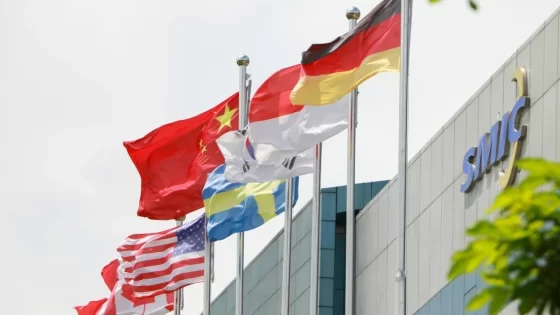If China’s largest foundry pulls this off, U.S. lawmakers and officials will go ballistic،
If you thought US lawmakers and officials went crazy after Huawei announced the Mate 60
Pro in August, powered by the 7nm Kirin 9000s 5G chip, as the saying goes, “you ain't seen nothing yet . The Kirin 9000 was built by China's largest foundry, SMIC, using older technology such as the deep ultraviolet (DUV) lithography machine that etches circuit patterns onto silicon wafers.
While DUV machines can help foundries make chips at the 7nm process node, it takes an extreme ultraviolet (EUV) lithography machine to produce chips at 5nm and below. The lower the process node, the smaller the transistors, allowing more of them to fit into a chip; the higher the number of transistors in a chip, the more powerful and energy efficient it is. Only one company makes EUV machines and hasn't shipped any to China.
SMIC has an R&D team dedicated to the manufacturing of 3nm chips by DUV lithography
According to
DigiTimes (via
Gizmochina), SMIC has established an R&D team to manufacture 3nm chips using DUV lithography equipment. This would be considered an impossible task since the patterns created by an EUV machine are finer than human hair and must be to facilitate the placement of billions of transistors. This SMIC R&D team is led by co-CEO Liang Mong-Song, a well-known semiconductor scientist. He has worked at TSMC and
Samsung Foundry and in the semiconductor industry he is considered a genius.
SMIC is authorized to take delivery of this ASML DUV lithography machine
SMIC is the country's fifth largest contract foundry in the world and is powered by ASML's Twinscan NXT:2000i DUV lithography machine. Using a dual setup, a foundry like SMIC can use a DUV machine to produce 7nm chips; SMIC would use triple, quadruple and even quintuple patterns to try to reach 3nm without an EUV lithography machine.
There is no guarantee that if SMIC succeeds in producing 3nm chips using DUV, the components will perform as well as the 3nm chips produced by TSMC and Samsung Foundry. By 2025, the line of scrimmage moves to 2nm production and the new leader in the process could be Intel with its A18 (1.8nm) technology. All of these foundries have the luxury of using EUV (and second generation EUV High-NA machines) unlike SMIC.
Every time the US thinks it has Huawei nailed, the company escapes
US sanctions against Huawei and SMIC could end up being seen as a massive failure. SMIC can now make 7nm 5G chipsets and has one of the brightest minds in the industry trying to figure out how to build 3nm silicon using older technology. Every time the United States thought it had Huawei cornered, the company managed to escape. Consider this: Placed on the US Entity List, Huawei was barred from doing business with Google. So he replaced the Google Mobile Services version of Android with his local HarmonyOS.
It also replaced Google Mobile Services with its successful Huawei Mobile Services. And the Huawei Mate 60 lineup not only brings native 5G back to Huawei phones for the first time since 2020, but the phones themselves could be in the same discussion as the
iPhone 15 Pro Max, Galaxy S23 Ultra, and Pixel 8 Pro. Imagine if the line was powered by a 3nm chip like the iPhone 15 Pro and
iPhone 15 Pro Max are.
In 2019, Huawei shipped 240.6 million phones and the company was placed on the US Entity List for security reasons. In 2020, the chip ban began, but Huawei had enough inventory to ship 188.5 million smartphones. The sale of its Honor sub-brand, combined with sanctions, reduced Huawei's shipments by more than 81%, to just 35 million units in 2021. Huawei is now on its way back toward shipping 100 million units. 'units per year and has a real blow on its hands.
If SMIC manages to develop 3nm chips using DUV, which is certainly a long way to go, U.S. officials and lawmakers will be beside themselves looking for a way to stop this momentum.

















